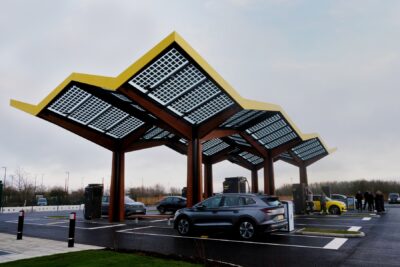Tesla shares Supercharger data with Google Maps
This was announced by the @TeslaCharging account in one of its usual short posts on X. ‘Live availability of Superchargers now in Google Maps,’ is all it says. The graphic shown here as the article image was also published.
Basically, this one sentence says everything that needs to be said: real-time occupancy data can now be displayed via Google Maps or when planning a route using Google’s map app. The example in the graphic shows a Supercharger location in Brussels where 15 and 16 charging points are available. The maximum charging power of 250 kW is also displayed, so this is not one of the (now quite rare) locations with the older V2 Superchargers.
The other example shows a US Supercharger in San Bruno, California. There, charging is possible at up to 325 kW, but not all 12 stalls are available; unlike in the Brussels example, you have to weigh up whether to actually drive to the Supercharger and risk all charging spaces being occupied when you arrive. As with other points of interest in Google Maps, a history of utilisation is also available, allowing you to check the likely occupancy at a certain time of day depending on the day of the week. It is not known whether this information is based on Tesla data or (as is the case with restaurants, for example) on location data from Android users.
In the case of Superchargers, such information was previously only accessible via Tesla vehicles or the Tesla app, but this required a vehicle and at least one registration in the app. Recently, some charging point operators have started to display the live availability of their charging points not only in their respective apps or other charging apps, but also to make the information available to Google Maps.
The information is not yet sufficient for automatic route planning in the Maps app or browser; charging stations still need to be added manually as waypoints – for example, if Google Maps is to be used for navigation via Apple CarPlay or Android Auto. The situation is different if the vehicle has a navigation system based on Android Automotive OS, and Google Maps is the basis for the vehicle navigation system. Here, the new real-time data can be a practical aid in deciding whether to drive to the Supercharger or choose an alternative due to high occupancy.
This article was first published by Sebastian Schaal for electrive’s German edition.





0 Comments